Growing your own food is one of the most rewarding things that you can do, whether you have a large homestead on many acres or a small backyard lot. Either way, it is well worth the effort to have homegrown produce. It is helpful in many ways to be able to extend the season a little at the beginning and the end, to get plants started early or to have a fall garden. Depending on your zone, you may even be able to have some kind of garden through the whole winter, with a little help. I will be going over three ways to extend your growing season, and I also want to tell you about an awesome new book called The Suburban Micro-Farm by Amy Stross!
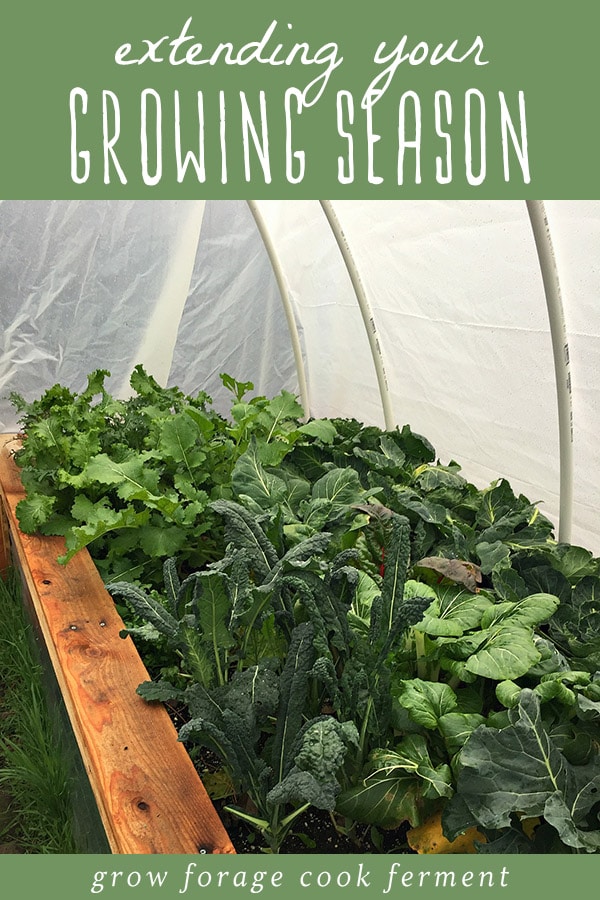 Once the cool nights of autumn begin, most people clean up their garden beds and call it quits for the season. Too bad they are missing out on one of the best times to garden!
Once the cool nights of autumn begin, most people clean up their garden beds and call it quits for the season. Too bad they are missing out on one of the best times to garden!
Planting and protecting a fall garden can be almost as productive as a summer garden, depending on your hardiness zone, and even less work. Since the heat of summer is over, less water is needed, there are not as many pests to worry about, and more cold hardy crops can be chosen from.
We live on a small lot, but these methods I describe are all things you can do with very limited space. Having only a small space to do permaculture type gardening can be challenging at times, so you just have to get a little bit creative!
My friend Amy from Tenth Acre Farm wrote an awesome book called The Suburban Micro-Farm that will show you how to work with and make your small scale garden super productive. I really love this book and all of the knowledge that is packed in it! It will really help you get your backyard garden be exactly what you want it to be.
Here are some my favorite ways to extend the growing season through the fall, and even into winter, in your small scale backyard garden!
3 Ways to Extend Your Growing Season
Simple Hoop Houses
Constructing a hoop house over your garden beds is actually pretty easy. One simple way is to bend lengths of PVC pipe over your beds and then cover the whole thing with plastic sheeting. Slip the ends of the PVC to rebar that has been pounded into the ground.
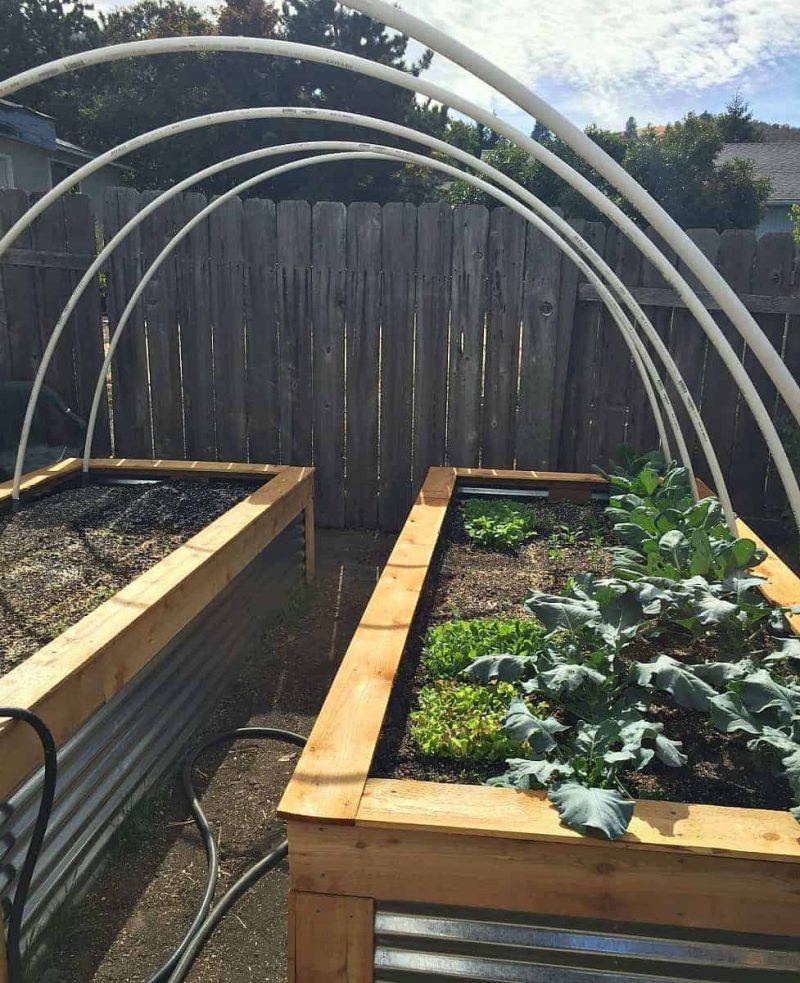
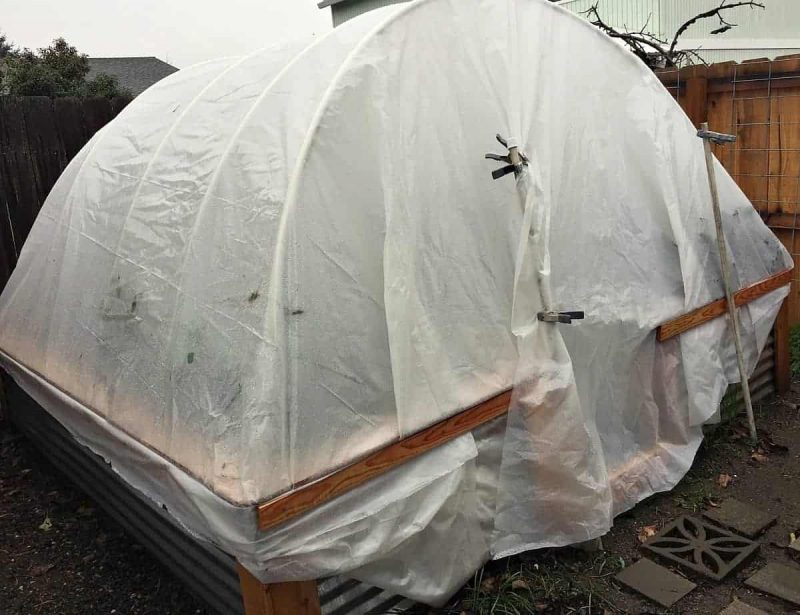
Cold Frames
You can make a cold frame simply by placing an old window on a bottomless box. The box can be a carefully constructed wooden frame, stacked cinder blocks or bricks, or even straw bales. Make it as simple or as nice as you like! Keep the cold frame closed at night and during cold days.
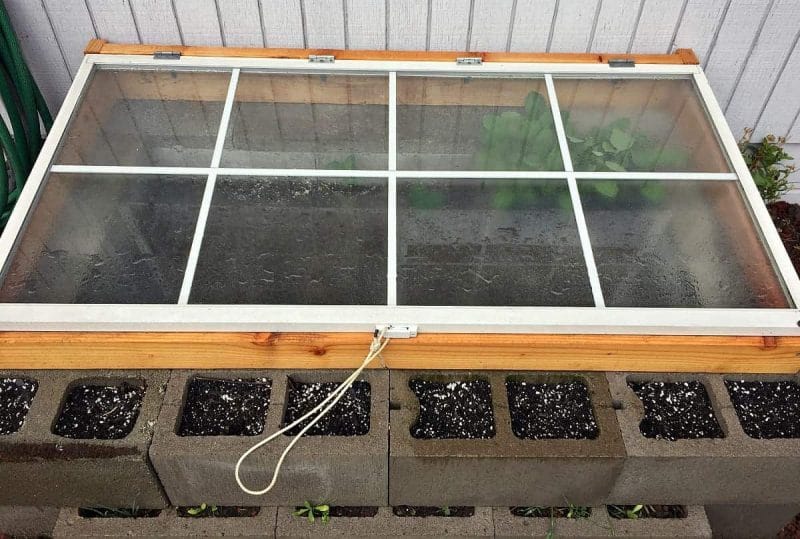
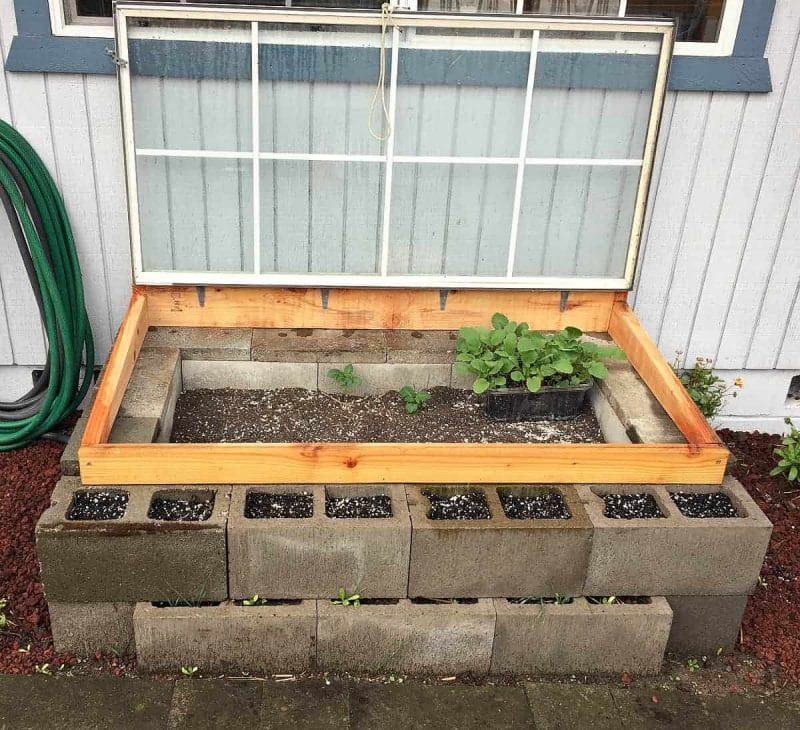
Here are some cold frames we had at our last property that were made from wood.
Amy goes into great detail about cold frames and how to use them in her book The Suburban Micro Farm if you want to learn more!
Cloches
Using a cloche is a way to protect a single plant, like a teeny tiny greenhouse. You can have several of them in use at any one time, and you can use them within your hoop house or cold frame (if it fits) for extra protection. Simply cover the plant with a plastic jug with the bottom cut off (milk jugs work great!), an upside down clear plastic tub (like the kind that baby salad greens come in), or even an inverted old aquarium.
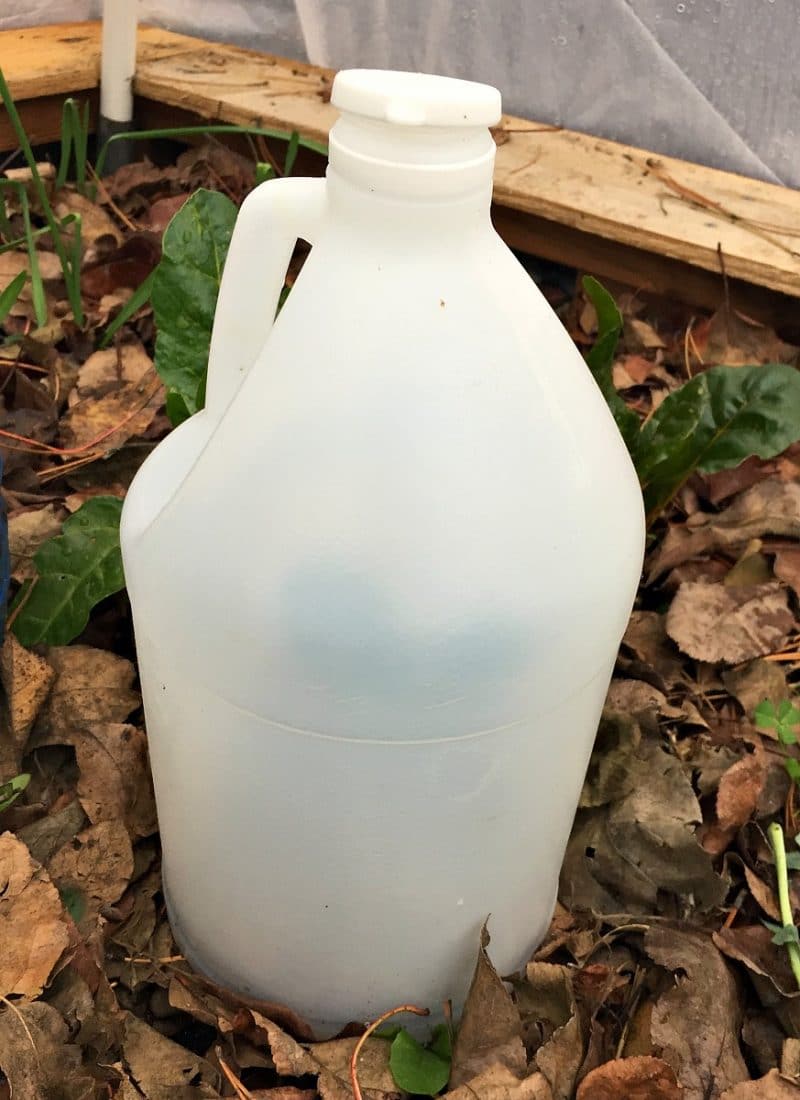
I hope this gives you some ideas for extending your growing season! Don’t forget to take a look at The Suburban Mirco-Farm by Amy Stross, I think you’ll love it!

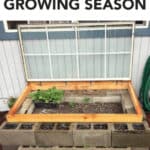
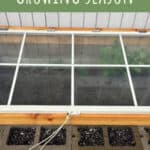
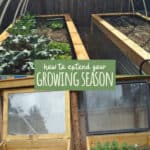
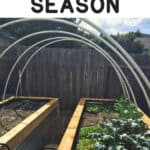
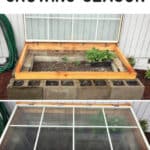
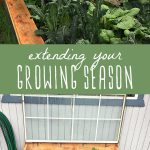
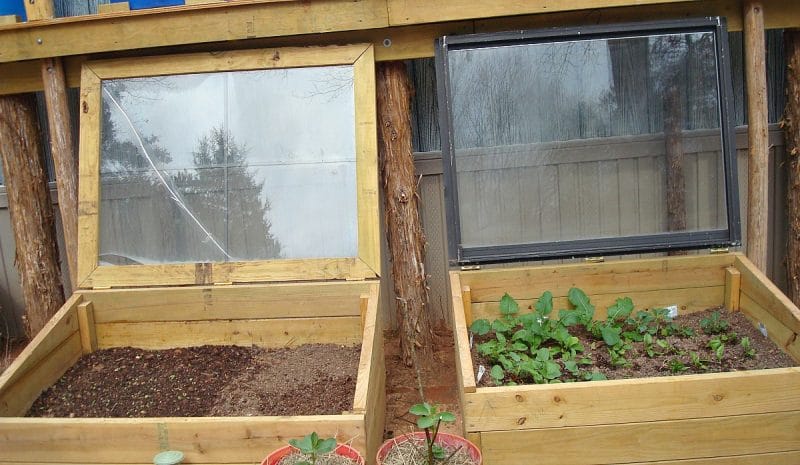

Leave a Reply